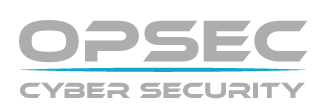Flex strengthens supply chain with IAM
July 10 2018Companies that depend on vast supply chains to produce their wares tend to work with hundreds or even thousands of partners, many of which require an online portal — or several — with which to share information. Flex, the $26 billion supply chain technology company formerly known as Flextronics, is no exception.
That presented a challenged for Flex CIO Gus Shahin in 2015, who the last few years has beefed up the company’s cybersecurity profile while accelerating business productivity. On that score, Shahin realized he needed an identity and access management (IAM) solution that enabled the company’s 200,000 employees, as well as its 17,000 suppliers, to communicate and connect to on-premises and cloud applications, which Flex was increasingly adding to its IT portfolio. “Everybody wants their products on the shelves faster,” Shahin says.
The case for easy single sign-on
But the IAM solution needed to be super secure, as hackers were increasingly targeting global companies through their third-party partners. Witness Target, whose defenses were penetrated by hackers who entered through an HVAC supplier, as Exhibit A.
Flex had long used portals to communicate with its employees and supply chain partners, but managing churn from both cohorts — provisioning and deprovisioning access to pools of ever coming and going people — proved challenging with the company’s inconsistent approach to IAM. For example, if partners didn’t access a portal for 30 days or more, they had re-authenticate to regain access.
Flex required a centralized solution from which to manage user access, which Shahin found in Okta, a cloud software maker specializing in single sign-on services. Okta enabled Flex’s partners to re-authenticate via self-service, reducing Flex’s help-desk support tickets, says Shahin.
“I liked where the company was heading,” says Shahin, of Okta’s architecture and strategy roadmaps. “It had the right culture and people.”
The IAM market has gained traction as the password continues its death march, giving way to single sign-on solutions, soft tokens and biometrics. Enterprises view IAM as core competency for digital businesses hoping to establish trust between businesses, people and things, while helping to fend off adversaries hungry for data that isn’t theirs. Done properly, IAM also helps reduce friction between companies, partners and customers.
By 2022, IAM-as-a-service will be the chosen delivery model for more than 80 percent of new access management purchases, up from 50 percent today, Gartner says. From 20th Century Fox to Experian to Flex and dozens of other leading enterprises, Okta has become the go-to solution for single sign-on IAM.
With Okta as the gateway to Flex’s SaaS (software-as-a-service) applications, Flex workers gain access to their Workday information, Box files and ServiceNow access from their smartphones. Moreover, Okta regularly integrates other cloud services that Flex uses, or plans to use. Flex has also worked with Okta to expand the company’s mobile capabilities and other features on the roadmap.
To continue reading this article register now
Learn More Existing Users Sign In
Flex strengthens supply chain with IAM
July 10 2018Companies that depend on vast supply chains to produce their wares tend to work with hundreds or even thousands of partners, many of which require an online portal — or several — with which to share information. Flex, the $26 billion supply chain technology company formerly known as Flextronics, is no exception.
That presented a challenged for Flex CIO Gus Shahin in 2015, who the last few years has beefed up the company’s cybersecurity profile while accelerating business productivity. On that score, Shahin realized he needed an identity and access management (IAM) solution that enabled the company’s 200,000 employees, as well as its 17,000 suppliers, to communicate and connect to on-premises and cloud applications, which Flex was increasingly adding to its IT portfolio. “Everybody wants their products on the shelves faster,” Shahin says.
The case for easy single sign-on
But the IAM solution needed to be super secure, as hackers were increasingly targeting global companies through their third-party partners. Witness Target, whose defenses were penetrated by hackers who entered through an HVAC supplier, as Exhibit A.
Flex had long used portals to communicate with its employees and supply chain partners, but managing churn from both cohorts — provisioning and deprovisioning access to pools of ever coming and going people — proved challenging with the company’s inconsistent approach to IAM. For example, if partners didn’t access a portal for 30 days or more, they had re-authenticate to regain access.
Flex required a centralized solution from which to manage user access, which Shahin found in Okta, a cloud software maker specializing in single sign-on services. Okta enabled Flex’s partners to re-authenticate via self-service, reducing Flex’s help-desk support tickets, says Shahin.
“I liked where the company was heading,” says Shahin, of Okta’s architecture and strategy roadmaps. “It had the right culture and people.”
The IAM market has gained traction as the password continues its death march, giving way to single sign-on solutions, soft tokens and biometrics. Enterprises view IAM as core competency for digital businesses hoping to establish trust between businesses, people and things, while helping to fend off adversaries hungry for data that isn’t theirs. Done properly, IAM also helps reduce friction between companies, partners and customers.
By 2022, IAM-as-a-service will be the chosen delivery model for more than 80 percent of new access management purchases, up from 50 percent today, Gartner says. From 20th Century Fox to Experian to Flex and dozens of other leading enterprises, Okta has become the go-to solution for single sign-on IAM.
With Okta as the gateway to Flex’s SaaS (software-as-a-service) applications, Flex workers gain access to their Workday information, Box files and ServiceNow access from their smartphones. Moreover, Okta regularly integrates other cloud services that Flex uses, or plans to use. Flex has also worked with Okta to expand the company’s mobile capabilities and other features on the roadmap.
To continue reading this article register now
Learn More Existing Users Sign In




